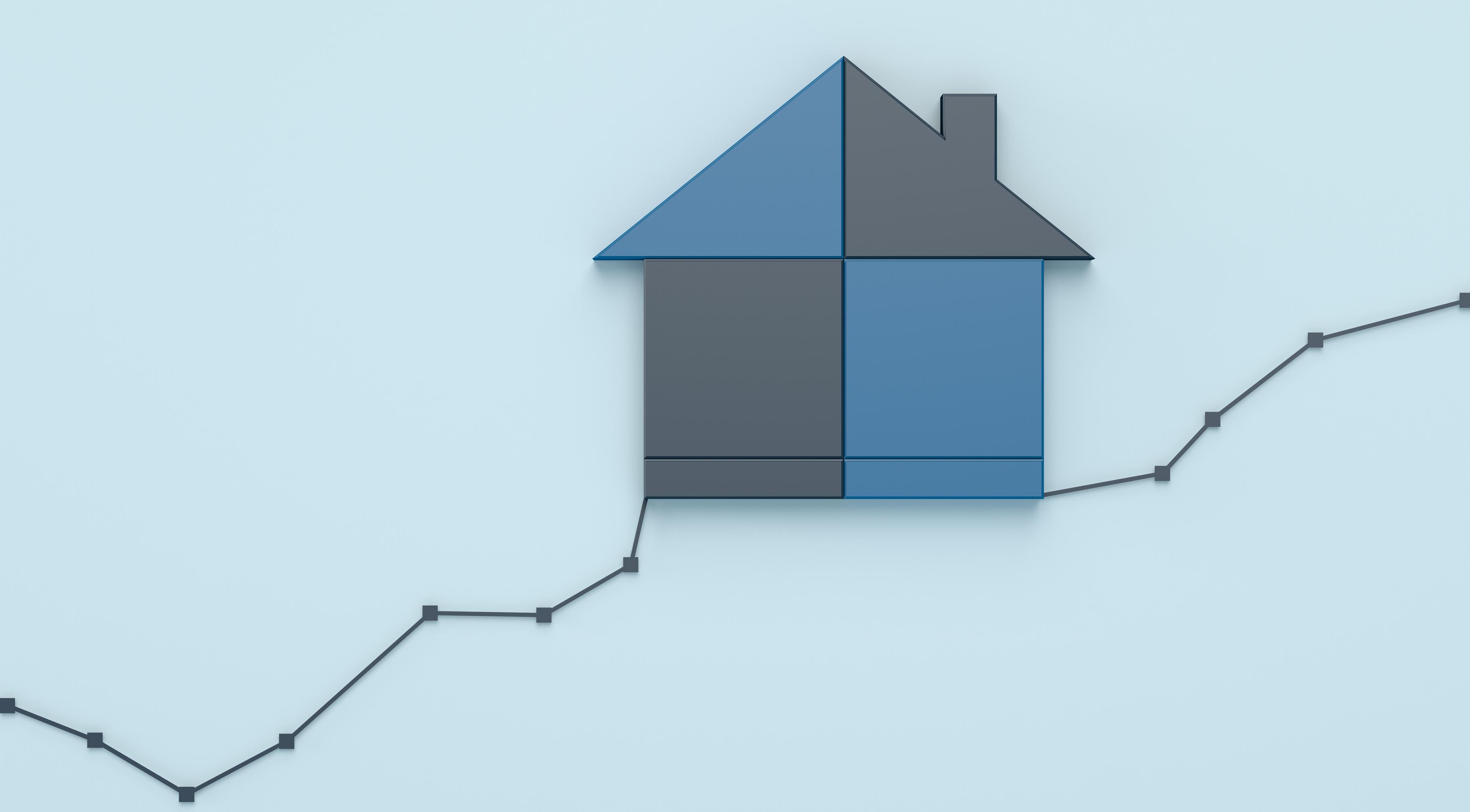
Higher Rates Hitting Households
-
bookmark
-
print

- Keywords:


Canada’s household debt-to-income ratio rose 2.8 ppts to 184.5% in Q1 (seasonally adjusted), from an upwardly revised 181.7% in the prior quarter and just off last year’s record highs. The unadjusted ratio dipped 0.55 ppt to 180.5%. On an adjusted basis, disposable incomes fell as government transfers receded and interest costs rose, with both factors more than offsetting the gain in compensation. Meantime, borrowing rose at the slowest pace since 2003 aside from the pandemic blip. Growth in mortgage loans was the lowest in 20 years as the Bank of Canada hiked rates once in the quarter before pausing. Looking ahead, the recovery in the housing market likely helped mortgage demand rebound in Q2, but the return of tightening could weigh in the following quarters.
The household debt service ratio (interest and principal as a share of disposable income) rose from 14.4% to 14.9% in Q1, the highest since 2019 and just a tick below the all-time high posted in 2007. The increase was driven by rising debt payments, which are expected to climb further in the coming quarters.
Meantime, household net worth rose to 1001.6% of disposable income, ending a string of three quarters of decline. Rising equities, and the recovery in the housing market, pushed up the value of household net worth. On the second point: owners’ equity in real estate increased from 73.5% to 74.3% in Q1 and is poised to recover further in the next quarter amid rising home prices.
Meantime, government debt ratios continued to improve thanks to higher nominal activity. Gross general government debt (includes all levels of government) ticked down one ppt to 124.9% of GDP, though it remains about 10 ppts above pre-pandemic levels. Net debt stepped down 0.7 ppt to 25.3% in Q1, in line with its pre-pandemic range.
Key Takeaway: Lower disposable income led to a deterioration in household debt ratios in Q1 despite a slowdown in mortgage demand following the Bank of Canada's aggressive rate hike campaign. Meantime, elevated interest rates are pushing debt service costs higher, which are poised to climb further in the coming quarters as the BoC raised policy rates again in June. That will likely act as a notable headwind on consumption and broader economic growth through the rest of this year and into 2024. Household debt remains a key vulnerability to the Canadian economy, and one that the Bank will watch closely as it determines how much more tightening is required this cycle.
Table 1 - Canada — National Balance Sheet Accounts
(percent)
| 23Q1 | 22Q4 | 22Q3 | 22Q2 | ||
|---|---|---|---|---|---|
| Credit Market Debt to Disp. Income | (s.a.) | 184.5 | 181.7 | 184.7 | 183.1 |
| (n.s.a) | 180.5 | 181.0 | 183.3 | 182.8 | |
| Net Worth to Disposable Income | (n.s.a) | 1001.6 | 971.9 | 981.5 | 1013.3 |
| Debt to Total Assets | (n.s.a) | 15.4 | 15.9 | 15.9 | 15.4 |
| Homeowner Equity | (n.s.a) | 74.3 | 73.5 | 74.0 | 75.5 |
| Total Gross Government Debt to GDP | (n.s.a) | 124.9 | 125.9 | 127.0 | 130.0 |
| Total Net Government Debt to GDP | (n.s.a) | 25.3 | 26.0 | 26.4 | 28.4 |
Shelly Kaushik
Economist
View Full Profile
Canada’s household debt-to-income ratio rose 2.8 ppts to 184.5% in Q1 (seasonally adjusted), from an upwardly revised 181.7% in the prior quarter and just off last year’s record highs. The unadjusted ratio dipped 0.55 ppt to 180.5%. On an adjusted basis, disposable incomes fell as government transfers receded and interest costs rose, with both factors more than offsetting the gain in compensation. Meantime, borrowing rose at the slowest pace since 2003 aside from the pandemic blip. Growth in mortgage loans was the lowest in 20 years as the Bank of Canada hiked rates once in the quarter before pausing. Looking ahead, the recovery in the housing market likely helped mortgage demand rebound in Q2, but the return of tightening could weigh in the following quarters.
The household debt service ratio (interest and principal as a share of disposable income) rose from 14.4% to 14.9% in Q1, the highest since 2019 and just a tick below the all-time high posted in 2007. The increase was driven by rising debt payments, which are expected to climb further in the coming quarters.
Meantime, household net worth rose to 1001.6% of disposable income, ending a string of three quarters of decline. Rising equities, and the recovery in the housing market, pushed up the value of household net worth. On the second point: owners’ equity in real estate increased from 73.5% to 74.3% in Q1 and is poised to recover further in the next quarter amid rising home prices.
Meantime, government debt ratios continued to improve thanks to higher nominal activity. Gross general government debt (includes all levels of government) ticked down one ppt to 124.9% of GDP, though it remains about 10 ppts above pre-pandemic levels. Net debt stepped down 0.7 ppt to 25.3% in Q1, in line with its pre-pandemic range.
Key Takeaway: Lower disposable income led to a deterioration in household debt ratios in Q1 despite a slowdown in mortgage demand following the Bank of Canada's aggressive rate hike campaign. Meantime, elevated interest rates are pushing debt service costs higher, which are poised to climb further in the coming quarters as the BoC raised policy rates again in June. That will likely act as a notable headwind on consumption and broader economic growth through the rest of this year and into 2024. Household debt remains a key vulnerability to the Canadian economy, and one that the Bank will watch closely as it determines how much more tightening is required this cycle.
Table 1 - Canada — National Balance Sheet Accounts
(percent)
| 23Q1 | 22Q4 | 22Q3 | 22Q2 | ||
|---|---|---|---|---|---|
| Credit Market Debt to Disp. Income | (s.a.) | 184.5 | 181.7 | 184.7 | 183.1 |
| (n.s.a) | 180.5 | 181.0 | 183.3 | 182.8 | |
| Net Worth to Disposable Income | (n.s.a) | 1001.6 | 971.9 | 981.5 | 1013.3 |
| Debt to Total Assets | (n.s.a) | 15.4 | 15.9 | 15.9 | 15.4 |
| Homeowner Equity | (n.s.a) | 74.3 | 73.5 | 74.0 | 75.5 |
| Total Gross Government Debt to GDP | (n.s.a) | 124.9 | 125.9 | 127.0 | 130.0 |
| Total Net Government Debt to GDP | (n.s.a) | 25.3 | 26.0 | 26.4 | 28.4 |
What to Read Next.
BMO Real Estate Forum | Income Property Outlook 2023
Mike Beg | June 19, 2023 | Commercial Real Estate

The BMO Commercial Real Estate team offer unique perspectives in a virtual discussion on the Income Property Real Estate Market. Featured panel speak…
Continue Reading>Related Insights
Tell us three simple things to
customize your experience






Banking products are subject to approval and are provided in Canada by Bank of Montreal, a CDIC Member.
BMO Commercial Bank is a trade name used in Canada by Bank of Montreal, a CDIC member.
Please note important disclosures for content produced by BMO Capital Markets. BMO Capital Markets Regulatory | BMOCMC Fixed Income Commentary Disclosure | BMOCMC FICC Macro Strategy Commentary Disclosure | Research Disclosure Statements
BMO Capital Markets is a trade name used by BMO Financial Group for the wholesale banking businesses of Bank of Montreal, BMO Bank N.A. (member FDIC), Bank of Montreal Europe p.l.c., and Bank of Montreal (China) Co. Ltd, the institutional broker dealer business of BMO Capital Markets Corp. (Member FINRA and SIPC) and the agency broker dealer business of Clearpool Execution Services, LLC (Member FINRA and SIPC) in the U.S. , and the institutional broker dealer businesses of BMO Nesbitt Burns Inc. (Member Canadian Investment Regulatory Organization and Member Canadian Investor Protection Fund) in Canada and Asia, Bank of Montreal Europe p.l.c. (authorised and regulated by the Central Bank of Ireland) in Europe and BMO Capital Markets Limited (authorised and regulated by the Financial Conduct Authority) in the UK and Australia and carbon credit origination, sustainability advisory services and environmental solutions provided by Bank of Montreal, BMO Radicle Inc., and Carbon Farmers Australia Pty Ltd. (ACN 136 799 221 AFSL 430135) in Australia. "Nesbitt Burns" is a registered trademark of BMO Nesbitt Burns Inc, used under license. "BMO Capital Markets" is a trademark of Bank of Montreal, used under license. "BMO (M-Bar roundel symbol)" is a registered trademark of Bank of Montreal, used under license.
® Registered trademark of Bank of Montreal in the United States, Canada and elsewhere.
™ Trademark of Bank of Montreal in the United States and Canada.
The material contained in articles posted on this website is intended as a general market commentary. The opinions, estimates and projections, if any, contained in these articles are those of the authors and may differ from those of other BMO Commercial Bank employees and affiliates. BMO Commercial Bank endeavors to ensure that the contents have been compiled or derived from sources that it believes to be reliable and which it believes contain information and opinions which are accurate and complete. However, the authors and BMO Commercial Bank take no responsibility for any errors or omissions and do not guarantee their accuracy or completeness. These articles are for informational purposes only.
Bank of Montreal and its affiliates do not provide tax, legal or accounting advice. This material has been prepared for informational purposes only, and is not intended to provide, and should not be relied on for, tax, legal or accounting advice. You should consult your own tax, legal and accounting advisors before engaging in any transaction.
Third party web sites may have privacy and security policies different from BMO. Links to other web sites do not imply the endorsement or approval of such web sites. Please review the privacy and security policies of web sites reached through links from BMO web sites.
Please note important disclosures for content produced by BMO Capital Markets. BMO Capital Markets Regulatory | BMOCMC Fixed Income Commentary Disclosure | BMOCMC FICC Macro Strategy Commentary Disclosure | Research Disclosure Statements




